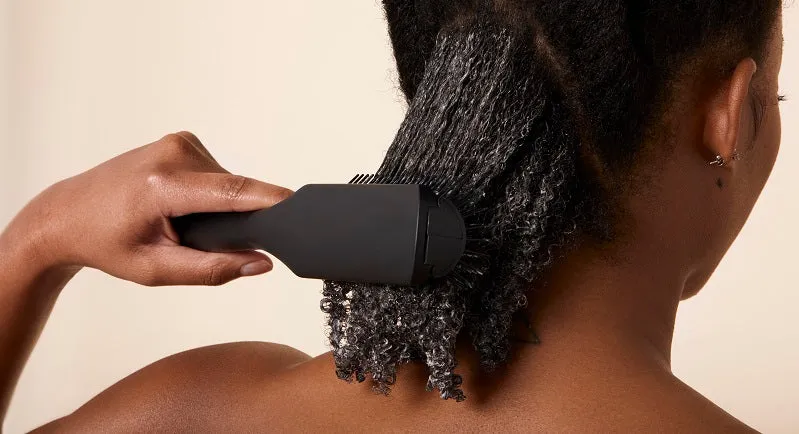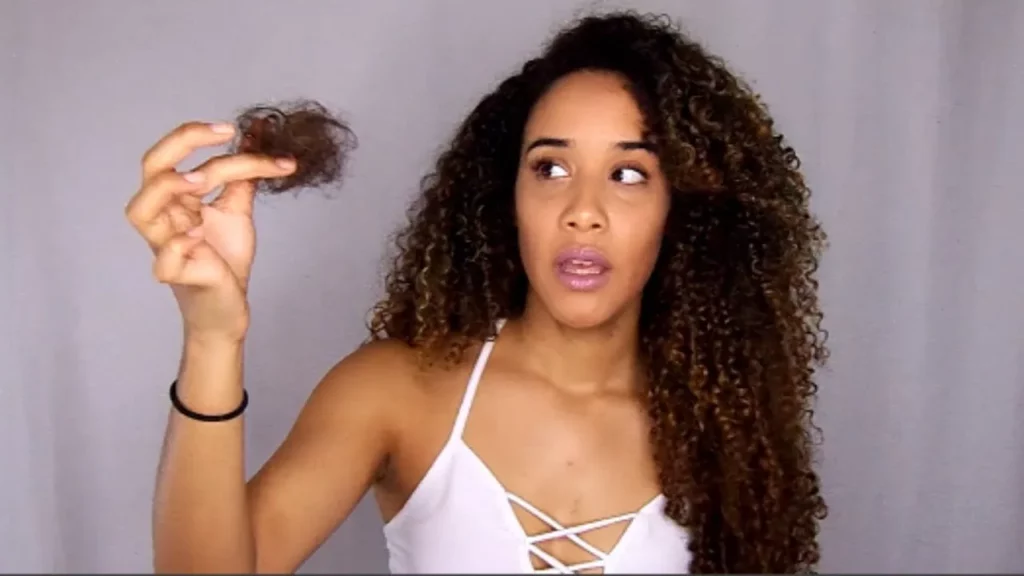Have you you been searching for the major signs of hair breakage in back hair? Get all the signs that signify your black hair is breaking.

Black hair is known for its rich texture, curls, and coils. It tends to be drier and more fragile than other hair types due to its unique structure.
Interestingly, the natural oils produced by the scalp have a harder time reaching the ends of the hair shaft, making it prone to dryness and breakage.
Additionally, the tight curls can lead to tangling, which, if not managed properly, can cause hair breakage.
However, black hair comes with its unique set of challenges, one of which is the risk of hair breakage.
Understanding the signs of hair breakage is essential for maintaining the strength and vibrancy of your black hair.
Here, you will get to know the common indicators of hair breakage and tips on how to prevent hair breakage in black hair.
Signs of Hair Breakage in Black Hair

Here are the major signs of hair breakage in black hair:
1. Excessive Shedding
One of the initial signs of hair breakage in black hair is excessive shedding.
If you notice an unusually high amount of hair left on your comb, brush, or pillow, it’s a clear red flag.
Also, shedding occurs when the hair shaft weakens, leading to premature hair loss.
This can result from a variety of factors, including physical damage, chemical treatments, or inadequate hair care practices.
However, identifying excessive shedding early is essential for addressing the issue and preventing further damage.
2. Split Ends
Split ends are a common problem in black hair and a visible sign of hair breakage.
When the protective outer layer of the hair shaft, known as the cuticle, becomes damaged, the hair splits into two or more strands at the end.
Also, this not only makes the hair look frayed and unhealthy but also weakens it, making it more prone to breakage.
Regular trims can help remove split ends and prevent them from traveling up the hair shaft.
3. Dry and Brittle Texture
Dry and brittle hair is more susceptible to breakage in black hair.
If your black hair feels rough, lacks moisture, and is prone to tangling, it’s a sign that it needs extra care to prevent breakage.
Factors such as harsh weather, frequent heat styling, or the use of harsh hair care products can contribute to the loss of moisture and the resulting dryness and brittleness.
Furthermore, deep conditioning treatments and using moisturizing hair products can help restore hydration and strength to your hair.
4. Thinning or Bald Spots
Experiencing thinning hair or noticing bald spots is a clear indication of significant hair breakage.
Furthermore, these areas may become more noticeable over time if the issue is not addressed promptly.
Hair thinning and bald spots can result from a combination of factors, including genetics, overuse of tight hairstyles, and untreated hair breakage.
Also, seeking professional guidance and adopting gentle hair care practices are crucial steps in addressing this concern.
5. Reduced Elasticity
Black hair should have some level of elasticity, allowing it to stretch without breaking.
If your hair loses its ability to stretch and return to its original state without snapping, it could signify underlying damage.
Also, reduced elasticity can result from repeated exposure to heat styling, chemical treatments, or aggressive hair care practices.
Strengthening treatments and minimizing damaging practices can help restore elasticity to your hair.
6. Knots and Tangles
Constant knots and tangles, especially in the same areas of your hair, can lead to breakage.
Also, these knots weaken the hair shaft and make it more prone to snapping when you attempt to detangle them.
Gentle detangling techniques, such as using a wide-toothed comb or your fingers, along with the use of detangling products, can help prevent this form of damage.
7. Rough Cuticles
The cuticle layer of black hair should lie flat and smooth to protect the inner layers of the hair shaft.
If you notice raised or rough cuticles, it can indicate damage that makes the hair susceptible to breakage.
In addition, this damage can result from harsh hair care practices, such as excessive brushing or using high heat without heat protectants.
Furthermore, using products that promote cuticle smoothing and practicing gentle hair care can help maintain the integrity of the cuticle layer.
8. Lack of Growth
Stunted or slow hair growth can be a consequence of ongoing hair breakage.
When hair breaks faster than it grows, it can appear as if your hair is not growing at all.
Identifying and addressing the underlying causes of breakage, such as damage or poor hair care practices, is crucial for promoting healthy hair growth.
However, implementing a hair care routine that focuses on minimizing breakage and nourishing the scalp can help encourage natural hair growth.
In conclusion, understanding the signs of hair breakage in black hair is essential for addressing the issue and preventing further damage.
If you recognize any of these signs, it’s crucial to take action to restore the health of your hair.
This may include adopting a proper hair care routine, using moisture-rich products, avoiding excessive heat styling, and getting regular trims to remove split ends.
With the right care and attention, you can maintain the strength and beauty of your black hair.
Related Searches: